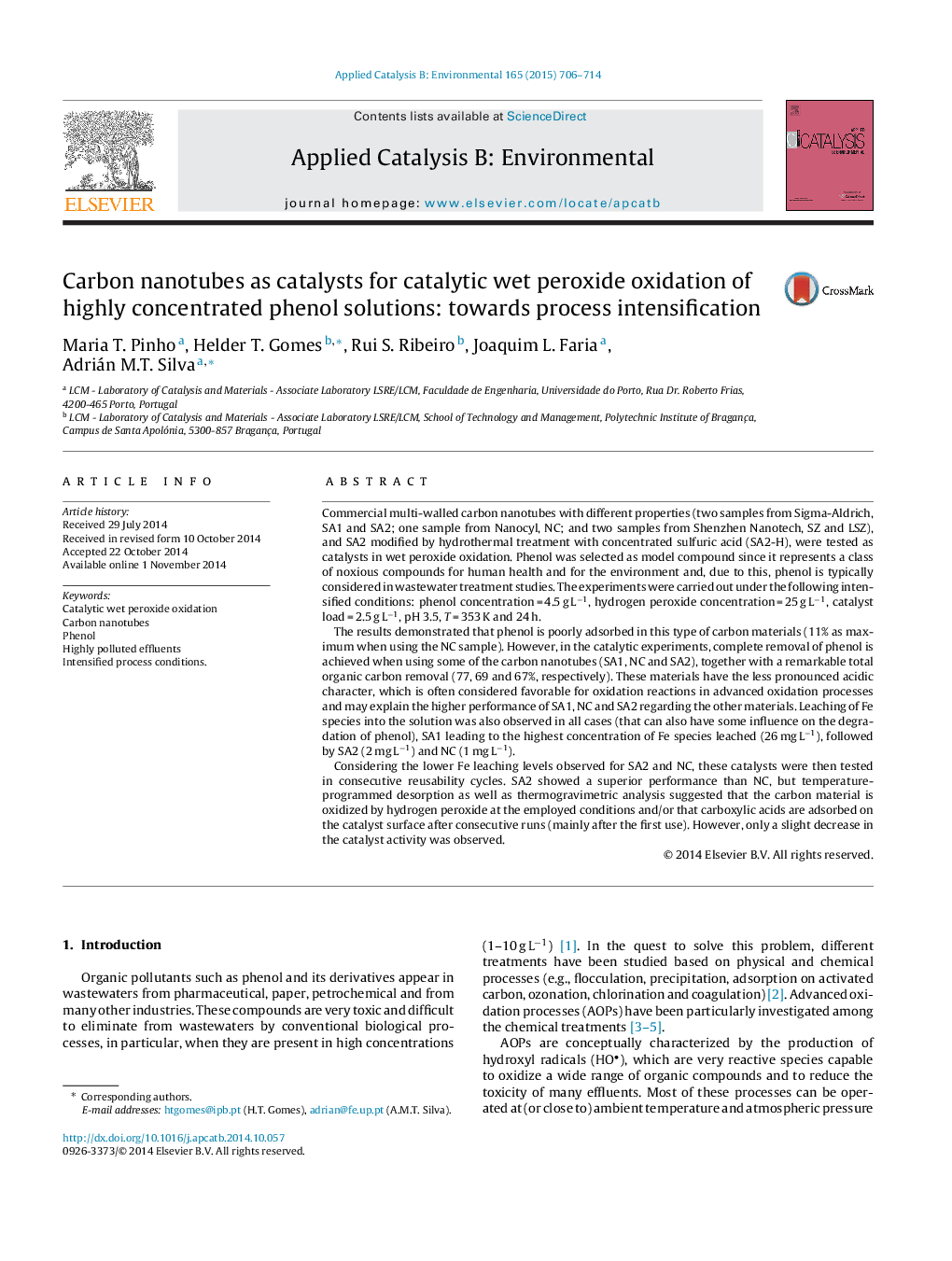| کد مقاله | کد نشریه | سال انتشار | مقاله انگلیسی | نسخه تمام متن |
|---|---|---|---|---|
| 45604 | 46416 | 2015 | 9 صفحه PDF | دانلود رایگان |
• Different multi-wall carbon nanotubes tested in catalytic wet peroxide oxidation.
• Experiments performed with highly concentrated phenol solutions.
• Carbon nanotubes show high catalytic activity under intensified process conditions.
• Complete phenol conversion and remarkable total organic carbon removal obtained.
Commercial multi-walled carbon nanotubes with different properties (two samples from Sigma-Aldrich, SA1 and SA2; one sample from Nanocyl, NC; and two samples from Shenzhen Nanotech, SZ and LSZ), and SA2 modified by hydrothermal treatment with concentrated sulfuric acid (SA2-H), were tested as catalysts in wet peroxide oxidation. Phenol was selected as model compound since it represents a class of noxious compounds for human health and for the environment and, due to this, phenol is typically considered in wastewater treatment studies. The experiments were carried out under the following intensified conditions: phenol concentration = 4.5 g L−1, hydrogen peroxide concentration = 25 g L−1, catalyst load = 2.5 g L−1, pH 3.5, T = 353 K and 24 h.The results demonstrated that phenol is poorly adsorbed in this type of carbon materials (11% as maximum when using the NC sample). However, in the catalytic experiments, complete removal of phenol is achieved when using some of the carbon nanotubes (SA1, NC and SA2), together with a remarkable total organic carbon removal (77, 69 and 67%, respectively). These materials have the less pronounced acidic character, which is often considered favorable for oxidation reactions in advanced oxidation processes and may explain the higher performance of SA1, NC and SA2 regarding the other materials. Leaching of Fe species into the solution was also observed in all cases (that can also have some influence on the degradation of phenol), SA1 leading to the highest concentration of Fe species leached (26 mg L−1), followed by SA2 (2 mg L−1) and NC (1 mg L−1).Considering the lower Fe leaching levels observed for SA2 and NC, these catalysts were then tested in consecutive reusability cycles. SA2 showed a superior performance than NC, but temperature-programmed desorption as well as thermogravimetric analysis suggested that the carbon material is oxidized by hydrogen peroxide at the employed conditions and/or that carboxylic acids are adsorbed on the catalyst surface after consecutive runs (mainly after the first use). However, only a slight decrease in the catalyst activity was observed.
Figure optionsDownload as PowerPoint slide
Journal: Applied Catalysis B: Environmental - Volume 165, April 2015, Pages 706–714
